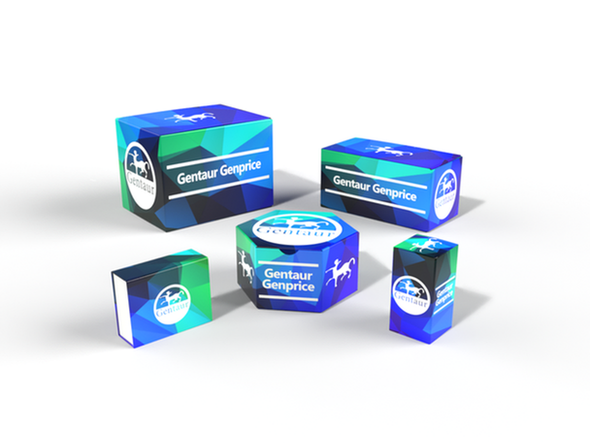749
Rat Gastric triacylglycerol lipase (LIPF) ELISA Kit | KTE100697
- SKU:
- 749-KTE100697
- Availability:
- Usually ships in 5 working days
Description
Rat Gastric triacylglycerol lipase (LIPF) ELISA Kit | KTE100697 | Gentaur UK, US & Europe Distribution
Application: This Rat Gastric triacylglycerol lipase (LIPF) ELISA Kit employs a two-site sandwich ELISA to quantitate LIPF in samples. An antibody specific for LIPF has been pre-coated onto a microplate. Standards and samples are pipetted into the wells and anyLIPF present is bound by the immobilized antibody. After removing any unbound substances, a biotin-conjugated antibody specific for LIPF is added to the wells. After washing, Streptavidin conjugated Horseradish Peroxidase (HRP) is added to the wells. Following a wash to remove any unbound avidin-enzyme reagent, a substrate solution is added to the wells and color develops in proportion to the amount of LIPF bound in the initial step. The color development is stopped and the intensity of the color is measured.
Detection Method: Colorimetric
Conjugate: N/A
Sample Type: Cell culture supernatants#Serum#Plasma#Other biological fluids
Assay Type: Multiple steps standard sandwich ELISA assay with a working time of 3-5 hours. It depends on the experience of the operation person.
Kit Component: • Rat Gastric triacylglycerol lipase microplate
• Rat Gastric triacylglycerol lipase standard
• Rat Gastric triacylglycerol lipase detect antibody
• Streptavidin-HRP
• Standard diluent
• Assay buffer
• HRP substrate
• Stop solution
• Wash buffer
• Plate covers
Features & Benefits: Rat Gastric triacylglycerol lipase (LIPF) ELISA Kit has high sensitivity and excellent specificity for detection of Rat LIPF. No significant cross-reactivity or interference between Rat LIPF and analogues was observed.
Calibration Range: Please inquire
Limit Of Detection: Please inquire
Usage Note: • Do not mix components from different kit lots or use reagents beyond the kit expiration date.
• Allow all reagents to warm to room temperature for at least 30 minutes before opening.
• Pre-rinse the pipet tip with reagent, use fresh pipet tips for each sample, standard and reagent to avoid contamination.
• Unused wells must be kept desiccated at 4 °C in the sealed bag provided.
• Mix Thoroughly is very important for the result. It is recommended using low frequency oscillator or slight hand shaking every 10 minutes.
• It is recommended that all samples and standards be assayed in duplicate or triplicate.
Storage Instruction: The unopened kit should be stored at 2 - 8°C. After opening, please store refer to protocols.
Shipping: Gel pack with blue ice.
Precaution The product listed herein is for research use only and is not intended for use in human or clinical diagnosis. Suggested applications of our products are not recommendations to use our products in violation of any patent or as a license. We cannot be responsible for patent infringements or other violations that may occur with the use of this product.
Background: Gastric lipase is an acidic lipase secreted by the gastric chief cells in the fundic mucosa in the stomach. It has a pH optimum of 3-6. Gastric lipase, together with lingual lipase, comprise the two acidic lipases. These lipases, unlike alkaline lipases (such as pancreatic lipase), do not require bile acid or colipase for optimal enzymatic activity. Acidic lipases make up 30% of lipid hydrolysis occurring during digestion in the human adult, with gastric lipase contributing the most of the two acidic lipases. In neonates, acidic lipases are much more important, providing up to 50% of total lipolytic activity.Gastric lipase is a polypeptide of 371 residues in length. The structure of gastric lipase was determined using X-ray diffraction with a resolution of 3.00 Å, and is composed of 41% helices and 14% beta sheets.
Alternative Names: LIPF; GL; HGL; HLAL; MGC138477; MGC142271; gastric triacylglycerol lipase; lipase F
Search name: LIPF; GL; HGL; HLAL; MGC138477; MGC142271; gastric triacylglycerol lipase; lipase F
Tag: LIPF






